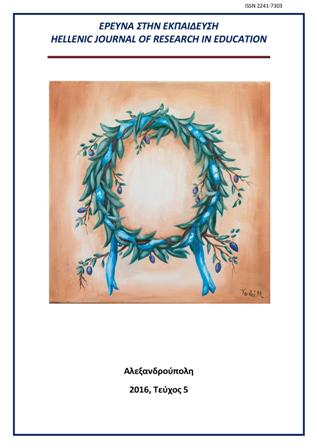The Effect of Interventional Psychomotor Education Program in Social Behavior, in self- esteem and preschoolers’ Motor Development

Abstract
The purpose of this research was to promote motor development, social behavior and self-esteem as well as the assessment of their relationship, before, during and after the application of a ten-month interventional psychomotor education program. Originally it was created and constructed the program of psychomotor intervention, which included motor activities (individual, group) with music and a strong element of enactment stories -fairy tales. Children often improvised or they were planning motor actions team-cooperatively and they performed them under the guidance and supervision of the kindergartener. The program was often applied three times a week for forty minutes and lasted from the last week of September 2014 to the first week of June 2015. The sample consisted of 44 infants (23 boys and 21 girls) aged 62 (± 4) months, which were selected from three public kindergartens of Ioannina. The children were divided into (experimental N1 = 22 and control N2 = 22 ) and two equal number groups of equal value, as demonstrated by the results of research in the initial measurements. In the experimental group the program of psychomotor therapy was implemented while in the control group it was applied the standard curriculum of the kindergarten. It was used the array of motor tests (MOT test 4-6), a registration list of social behavior and also a self rating scale. Descriptive statistics, analysis of variance for repeated measures, T-test checks for comparing two samples correlated and non-correlated values took place, and then a hierarchical regression analysis was made. The results showed that children liked the program of psychomotor intervention and they had lots of fun with it. It appeared from the results that initially the two groups had no differences in all three variables, in the middle measurement (after a five-month intervention), the experimental team achieved significantly better performance than the control group. In the final measurement the experimental team significantly achieved greater performance than both the team control and its own previous measurements. The control group after ten months in the final measurement achieved a significant improvement too regarding its initial measurement but not like the experimental one. The results of the hierarchical regression analysis on the relationship of social behavior with self-esteem and motor development in both initial and middle and final measurement showed that they are linear. In conclusion, the psychomotor intervention program supports the improvement of motor performance, social behavior and self-esteem. It is also important that through such procedures of the application of measurements such as those of the present research it is carried out an early detection of difficulties and the teacher is able to identify the particular developmental - learning needs of each child, and then to design appropriate developmental intervention programs for the confronting of the difficulties and the appropriate support.
Article Details
- How to Cite
-
Zaragas, C. K. (2016). The Effect of Interventional Psychomotor Education Program in Social Behavior, in self- esteem and preschoolers’ Motor Development. Hellenic Journal of Research in Education, 5(1), 104–128. https://doi.org/10.12681/hjre.10603
- Issue
- Vol. 5 No. 1 (2016)
- Section
- Articles

This work is licensed under a Creative Commons Attribution-NonCommercial-ShareAlike 4.0 International License.
Authors who publish with this journal agree to the following terms:
- Authors retain copyright and grant the journal right of first publication with the work simultaneously licensed under a CC-BY-NC-SA that allows others to share the work with an acknowledgement of the work's authorship and initial publication in this journal.
- Authors are able to enter into separate, additional contractual arrangements for the non-exclusive distribution of the journal's published version of the work (e.g. post it to an institutional repository or publish it in a book), with an acknowledgement of its initial publication in this journal.
- Authors are permitted and encouraged to post their work online (preferably in institutional repositories or on their website) prior to and during the submission process, as it can lead to productive exchanges, as well as earlier and greater citation of published work (See The Effect of Open Access).


